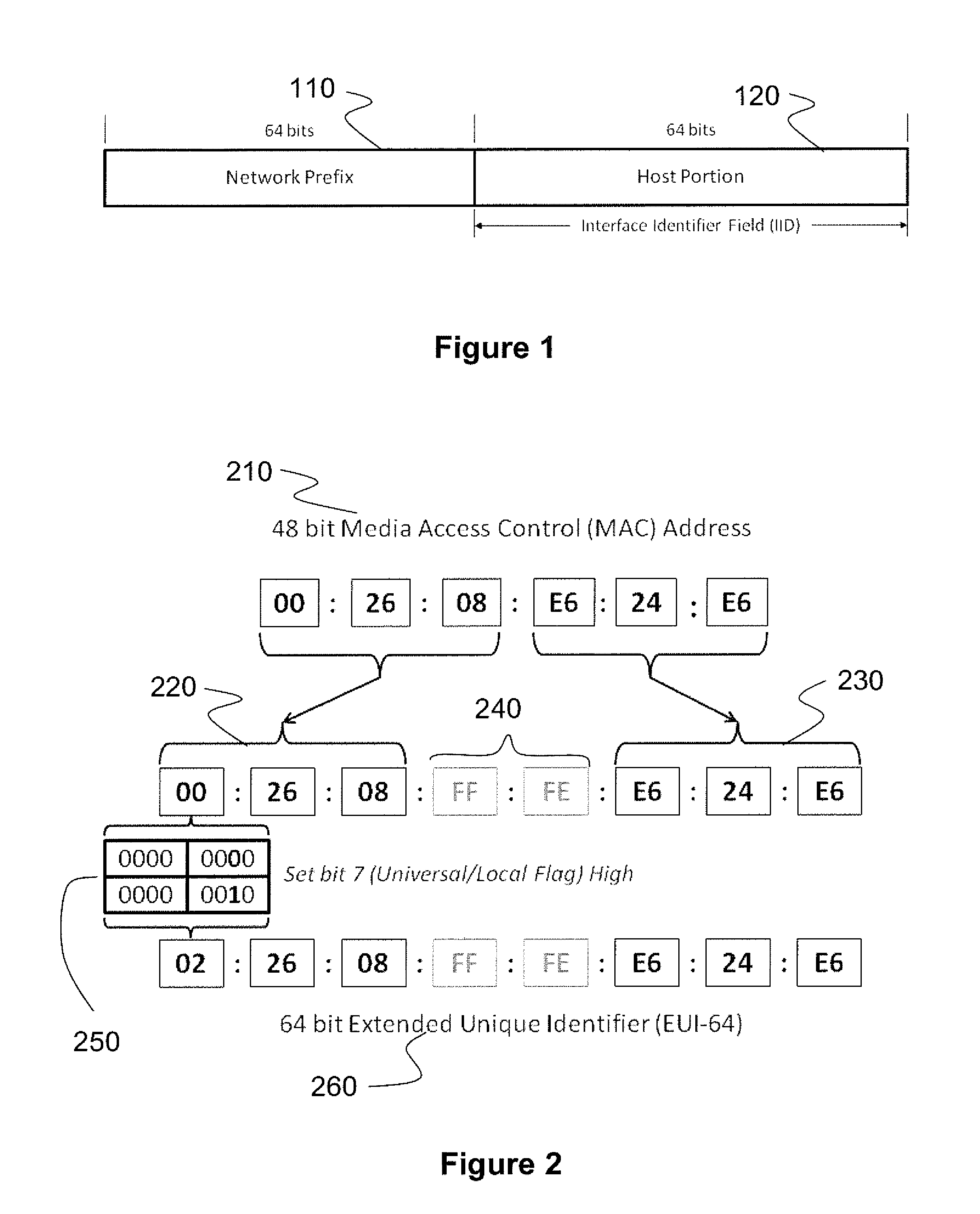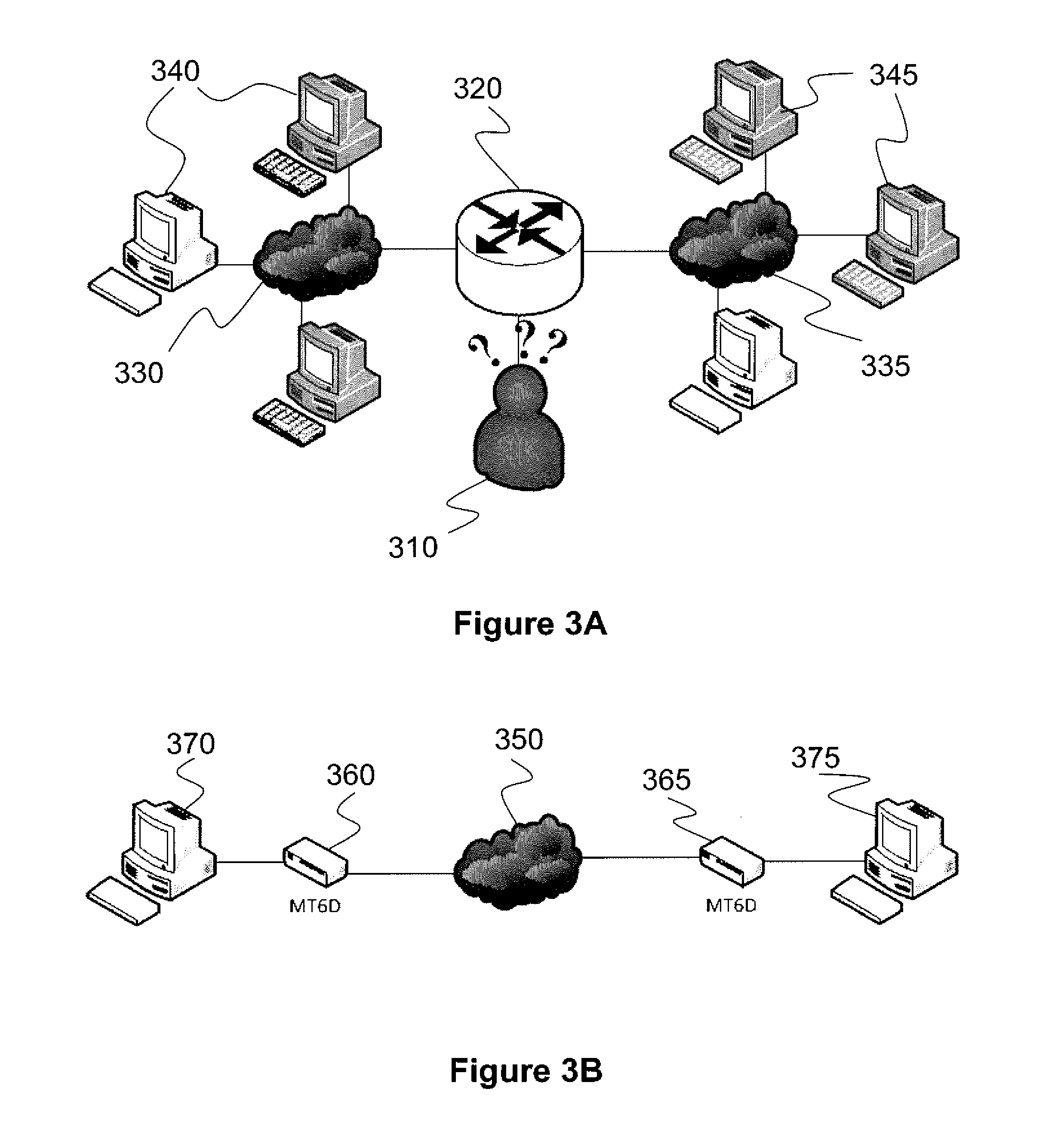Method and system for dynamically obscuring addresses in IPv6
a dynamic obscuring and address technology, applied in the field of network and transport layer addressing of packets, can solve the problems of many ipv4 address space expansion mechanisms such as nat being incompatible with emerging technologies, internet community once again facing the threat of internet protocol (ip) address shortage, and large portion of the community is still unfamiliar with ipv6. achieve the effect of maintaining anonymity of authenticated traffic, increasing security and scalability
- Summary
- Abstract
- Description
- Claims
- Application Information
AI Technical Summary
Benefits of technology
Problems solved by technology
Method used
Image
Examples
Embodiment Construction
Related Work
[0032]Moving Target IPv6 Defense (“MT6D”) involves dynamic address obscuration. There have been other proposals that also attempt to obscure network addresses. There are those that obscure network addresses for the purpose of privacy and those that obscure addresses to prevent certain classes of network attacks. We present the most relevant proposals and discuss how MT6D differs.
[0033]A technique disclosed in U.S. Patent Publication No. 2010 / 0042513 to Sheymov is also designed with the goal of dynamic obscuration. Instead of focusing strictly on addresses, Sheymov defines cyber coordinates. Cyber coordinates can represent any piece of information in cyber space, to include network addresses. Sheymov's objective behind dynamic obscuration is to provide intrusion protection from certain classes of network attacks. MT6D also prevents these same types of network attacks. The additional benefit MT6D provides is anonymity. Anonymity is not a goal of Sheymov and his design does...
PUM
 Login to View More
Login to View More Abstract
Description
Claims
Application Information
 Login to View More
Login to View More - R&D
- Intellectual Property
- Life Sciences
- Materials
- Tech Scout
- Unparalleled Data Quality
- Higher Quality Content
- 60% Fewer Hallucinations
Browse by: Latest US Patents, China's latest patents, Technical Efficacy Thesaurus, Application Domain, Technology Topic, Popular Technical Reports.
© 2025 PatSnap. All rights reserved.Legal|Privacy policy|Modern Slavery Act Transparency Statement|Sitemap|About US| Contact US: help@patsnap.com



